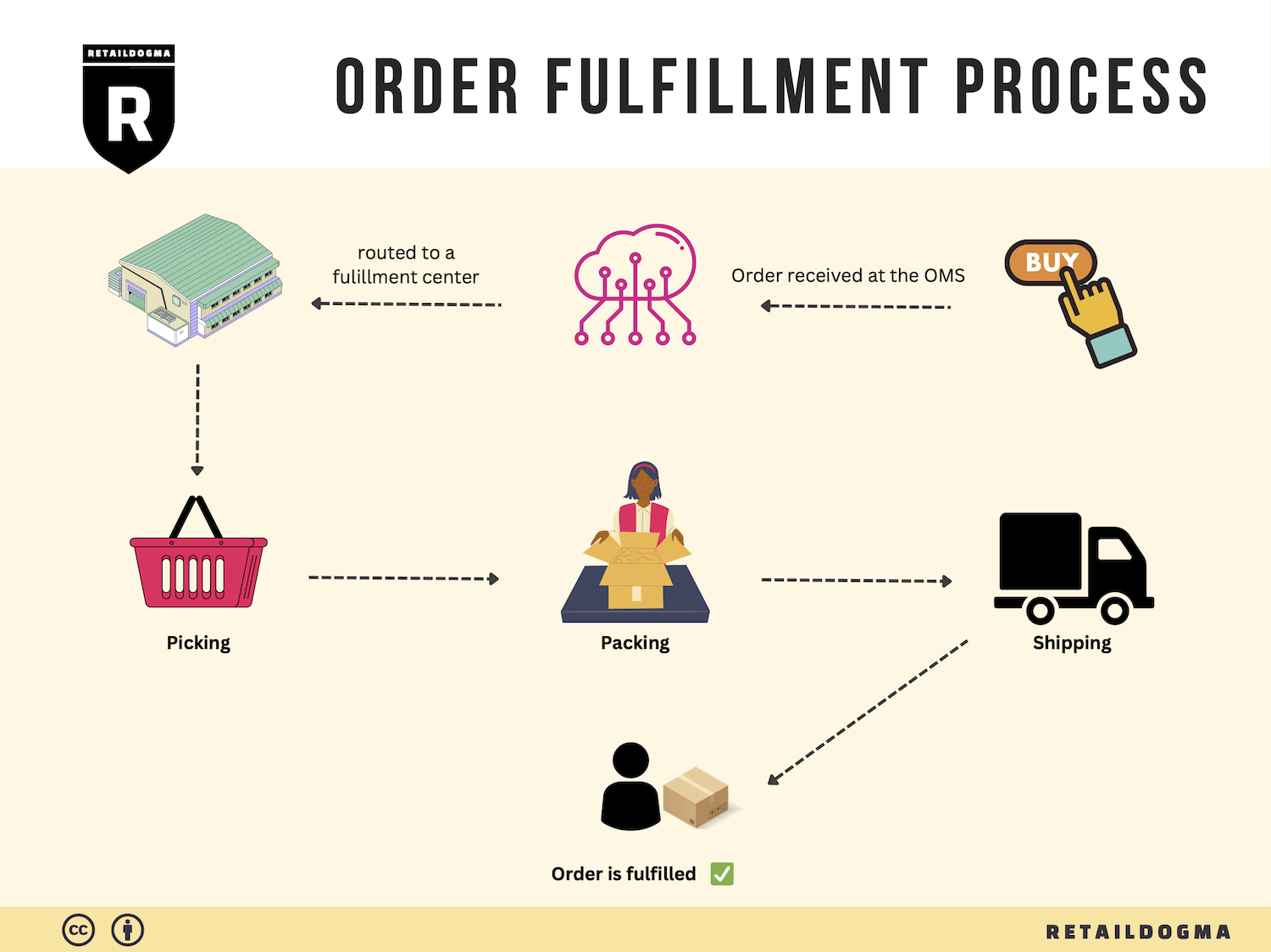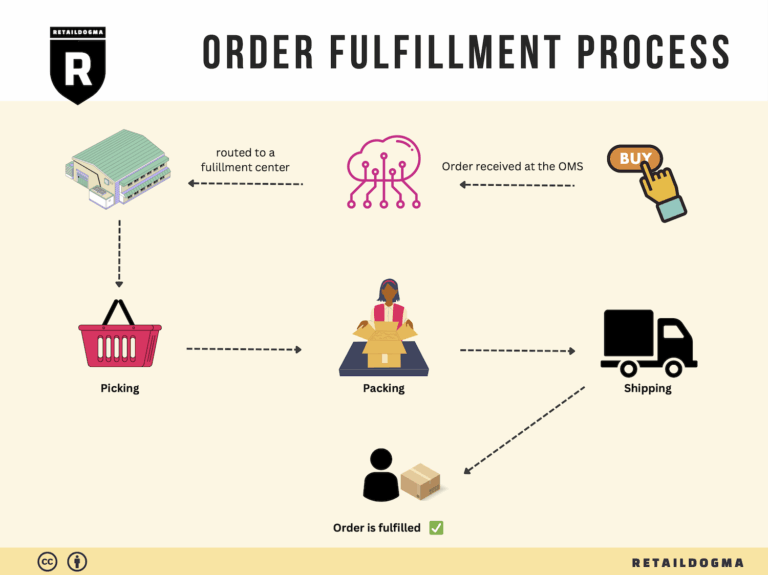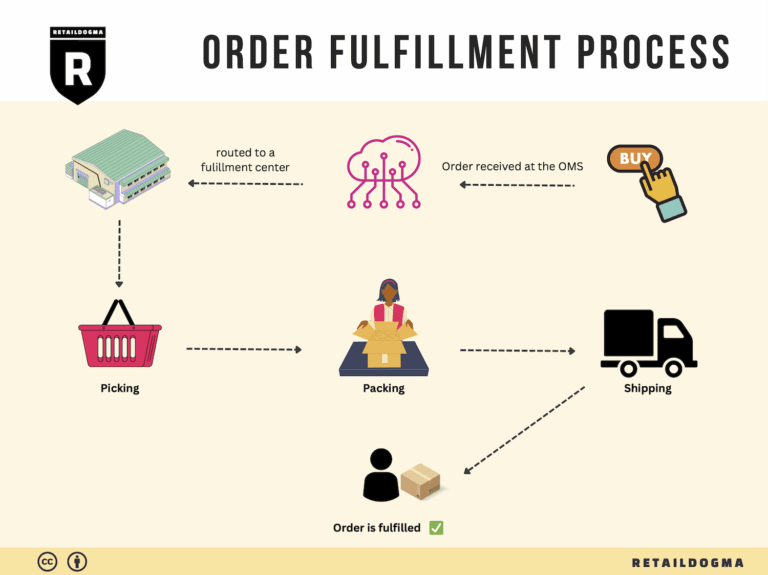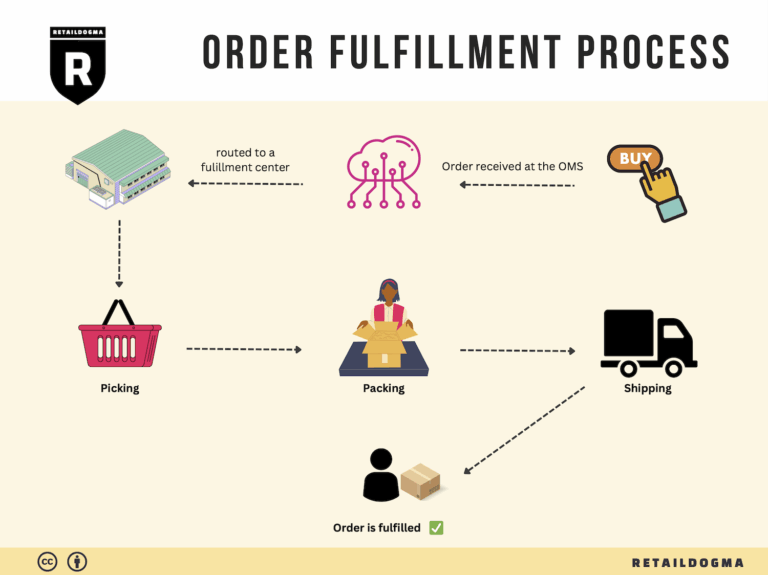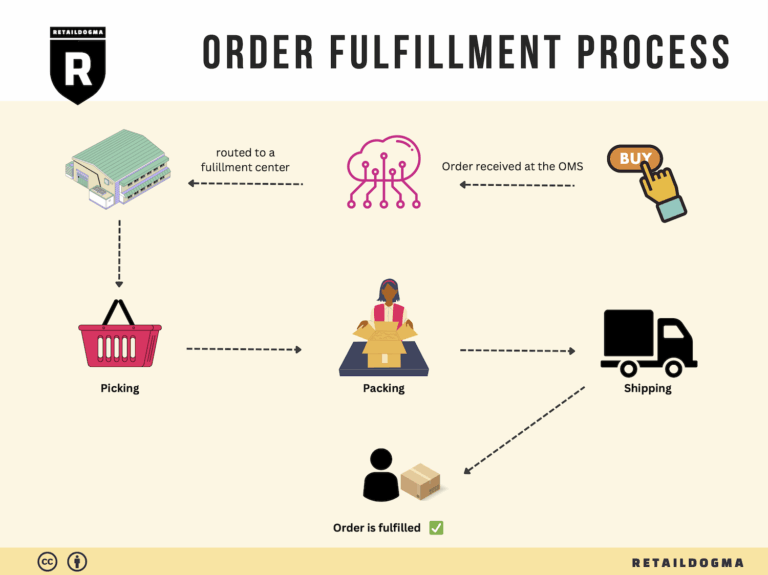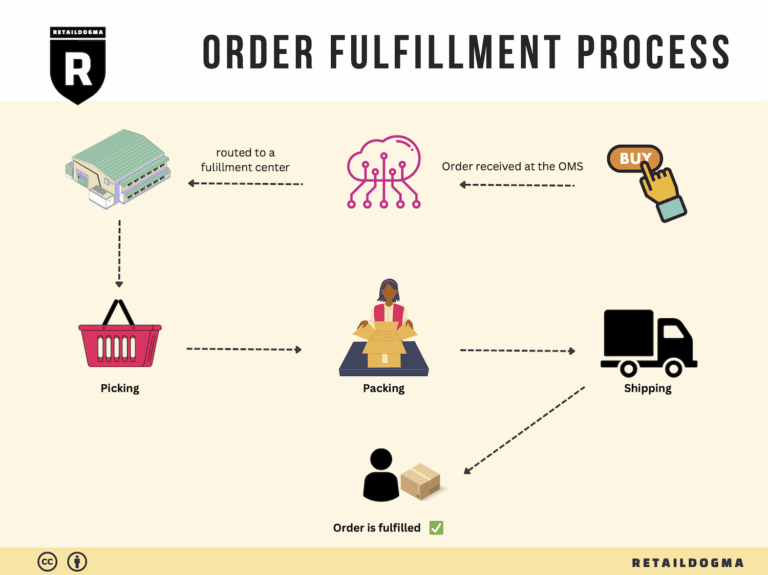Ecommerce Fulfillment Services: The Ultimate Guide (2025)
What is E-commerce Fulfillment? An Introduction for Growing Businesses
As e-commerce businesses grow, many entrepreneurs find themselves grappling with a common challenge: the overwhelming task of packing and shipping orders. The excitement of increasing sales can quickly turn into a logistical nightmare if not managed properly. This is where e-commerce fulfillment comes into play.
Understanding Fulfillment
At its core, fulfillment is the process of getting a product from the warehouse to the customer’s doorstep. It encompasses everything from receiving inventory and storing products to picking, packing, and shipping orders. For growing online businesses, efficient fulfillment is crucial, as it directly impacts customer satisfaction and retention. Customers expect fast, accurate deliveries, and failing to meet these expectations can result in lost sales and damaged reputations.
What This Guide Covers
In this guide, we will explore the various fulfillment models available to e-commerce businesses, including Third-Party Logistics (3PL) and Fulfillment by Amazon (FBA). Each model offers unique advantages and challenges, making it essential for business owners to understand which option aligns best with their operational needs and growth strategies.
We will also discuss the core services associated with fulfillment, such as inventory management, order processing, and returns handling. Understanding these services will help you evaluate potential partners and identify the capabilities that are essential for your business.
Choosing the right fulfillment partner is another critical aspect we will cover. Factors such as location, technology integration, scalability, and customer service should play a significant role in your decision-making process. A well-chosen partner can streamline your operations and provide you with the flexibility needed to adapt to changing market demands.
Finally, we will delve into pricing models associated with fulfillment services. Understanding the cost structure—whether based on storage fees, shipping rates, or per-order charges—will empower you to make informed financial decisions that can affect your bottom line.
Empowering Smart Decisions
The goal of this guide is to empower e-commerce business owners and operations managers to make informed decisions about their logistics strategies. By providing a comprehensive overview of fulfillment options, core services, partner selection, and pricing considerations, we aim to equip you with the knowledge necessary to enhance your operational efficiency and scale your business effectively. As you navigate the complexities of e-commerce fulfillment, remember that the right strategies and partnerships can turn logistics from a burden into a competitive advantage.
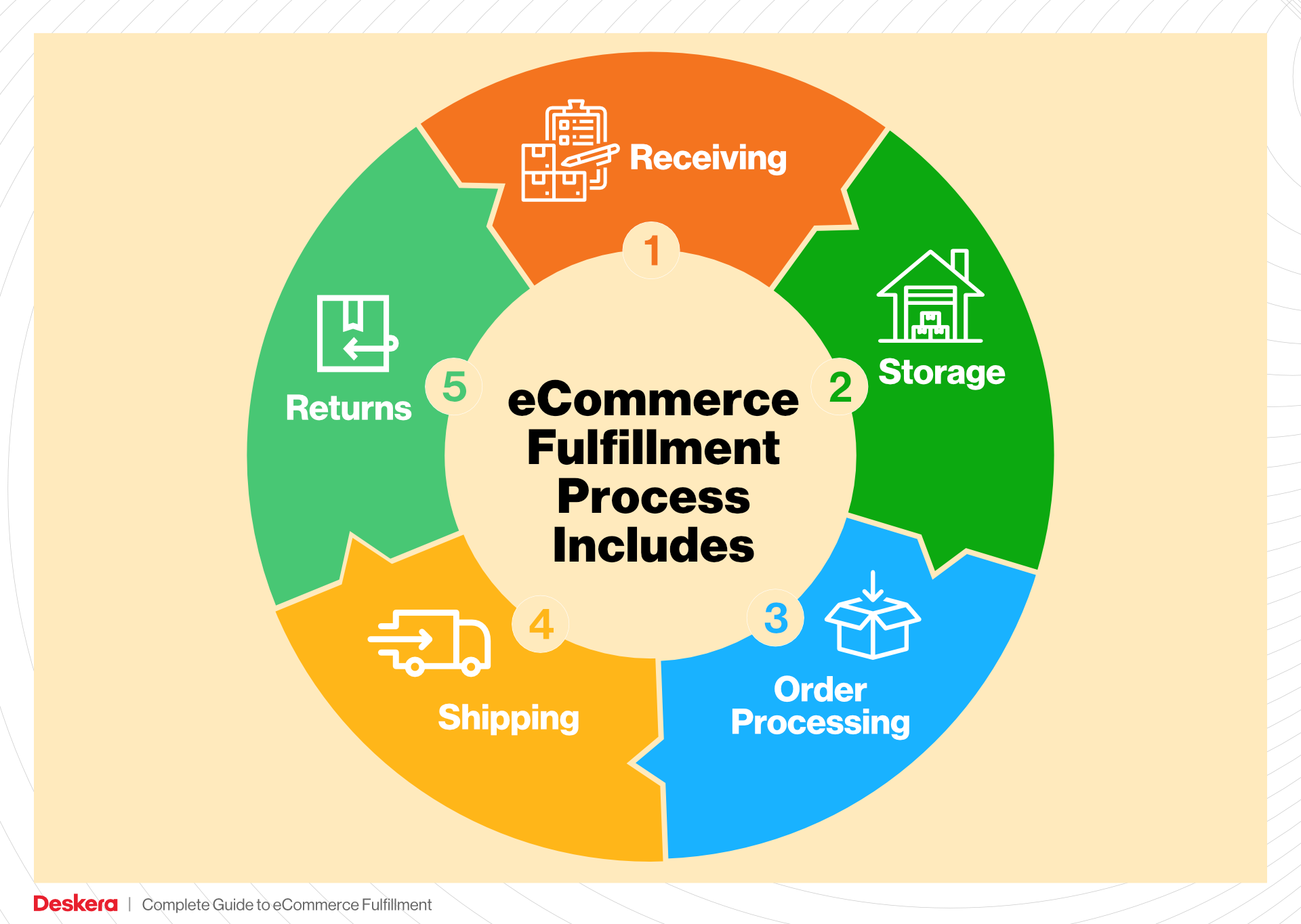
What You’ll Learn In This Guide
- What is E-commerce Fulfillment? An Introduction for Growing Businesses
- The Order Fulfillment Process: From ‘Buy’ Button to Customer’s Door
- Comparing Fulfillment Models: In-House vs. 3PL vs. Dropshipping
- A Deep Dive into Amazon FBA: Pros, Cons, and Who It’s For
- Core Services Offered by Fulfillment Centers
- How to Choose a Fulfillment Partner: A 6-Point Checklist
- Understanding Fulfillment Pricing: A Breakdown of Common Fees
- Frequently Asked Questions (FAQs) about Fulfillment
- Conclusion: Is Outsourcing Fulfillment the Right Move for Your Business?
- Important Disclaimer
The Order Fulfillment Process: From ‘Buy’ Button to Customer’s Door
1. Receiving Inventory
The order fulfillment process begins with receiving inventory at the fulfillment center. When products arrive, they are checked against purchase orders to ensure accuracy in quantity and quality. This step is crucial because discrepancies can lead to stockouts or excess inventory, both of which can impact customer satisfaction and operational efficiency.
During this process, items are assigned a Stock Keeping Unit (SKU) which serves as a unique identifier for each product. An effective receiving process involves using technology such as barcode scanners to streamline the identification and recording of items, reducing human error. Ensuring that inventory is accurately logged upon arrival lays the groundwork for efficient storage and order fulfillment.
2. Warehouse Storage
Once inventory is received, it is stored in designated locations within the warehouse. The organization of the warehouse is paramount; items are typically categorized by product type, size, or frequency of order to optimize storage efficiency and retrieval speed.
Utilizing a Warehouse Management System (WMS) is essential in this step, as it helps track where items are stored and assists in managing stock levels. Proper storage not only maximizes space but also minimizes the time required to locate products during the picking process. An organized warehouse ultimately leads to faster fulfillment times and improved service levels, which are critical for e-commerce success.
3. Order Picking
As orders come in, the next step is order picking, where items are retrieved from their storage locations to fulfill customer requests. This step is vital as it directly affects the speed and accuracy of order fulfillment.
Order pickers often use pick lists that outline the items and quantities needed for each order. Efficient picking strategies, such as batch picking or zone picking, can be employed to enhance productivity. For instance, batch picking allows workers to pick multiple orders simultaneously, thereby reducing the number of trips to the storage area. The accuracy of this step is crucial; mistakes can lead to incorrect shipments, returns, and ultimately, dissatisfied customers.
4. Order Packing
After items are picked, they move to the packing station. Here, products are prepared for shipment, which involves verifying the picked items against the order, packaging them securely, and labeling them appropriately. This stage is important because proper packing ensures that items arrive at the customer’s door in perfect condition.
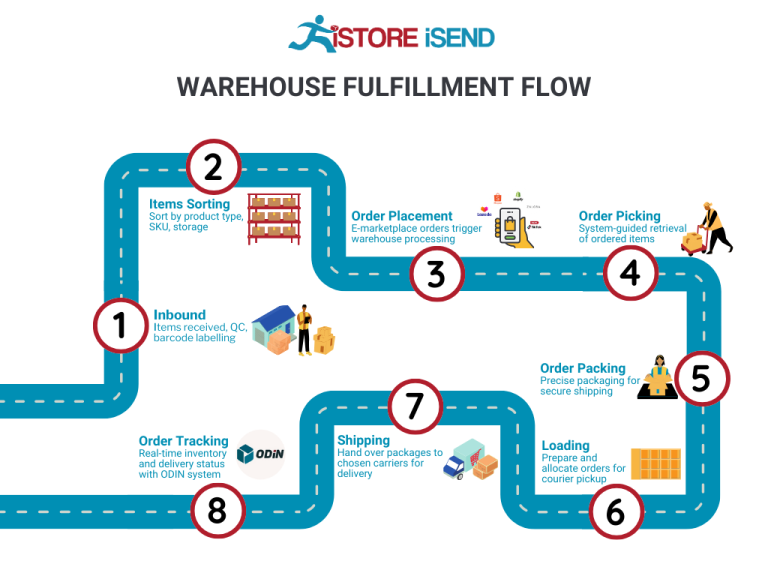
Key terms associated with this step include packing slips and shipping labels. Packing slips provide a summary of the items included in the shipment, while shipping labels contain essential information for delivery. Effective packing not only protects the products but also enhances the unboxing experience for customers, contributing to brand loyalty and repeat business. Moreover, the packing process should incorporate automated solutions, such as packing machines, to improve efficiency and reduce labor costs.
5. Shipping & Delivery
The final step in the order fulfillment process is shipping and delivery. Once orders are packed, they are handed over to carriers for transportation to the customer’s location. This step is critical as it directly impacts the customer’s perception of the entire shopping experience.
Timely delivery is often a differentiator in e-commerce, and businesses must choose reliable shipping partners to ensure that products arrive on time. Key performance indicators (KPIs) such as On-Time Delivery (OTD) are essential for measuring the effectiveness of the shipping process. Additionally, providing tracking information to customers enhances transparency and satisfaction, allowing them to monitor their order’s journey from the fulfillment center to their doorstep.
In conclusion, understanding and optimizing each step of the order fulfillment process is essential for e-commerce businesses looking to scale. By focusing on the efficiency and accuracy of receiving, storage, picking, packing, and shipping, businesses can significantly improve their operational performance and customer satisfaction.
Comparing Fulfillment Models: In-House vs. 3PL vs. Dropshipping
Fulfillment Model Comparison
| Model | Who Handles Inventory | Best For (Business Stage) | Key Advantage | Key Disadvantage |
|---|---|---|---|---|
| In-House Fulfillment | The business itself | Established businesses | Full control over inventory and processes | High overhead costs and resource demands |
| Third-Party Logistics (3PL) | An external logistics provider | Growing businesses | Scalability and reduced operational burden | Less control over inventory and processes |
| Dropshipping | Supplier or manufacturer | Startups and small businesses | Low initial investment and minimal risk | Lower profit margins and dependency on suppliers |
In-House Fulfillment
In-house fulfillment is a model where businesses manage their own warehousing, inventory, and shipping operations. This approach is best suited for established businesses that have sufficient capital and resources to invest in logistics infrastructure. The key advantage of in-house fulfillment is the level of control it provides. Companies can customize their operations to align with their brand standards, manage inventory more effectively, and respond quickly to customer demands. However, this model comes with significant drawbacks, including high overhead costs, the need for dedicated staff, and the complexities of managing logistics. Businesses must also invest in technology and systems to streamline processes and maintain efficiency, which can be particularly challenging as order volumes increase.
Third-Party Logistics (3PL)
Third-party logistics (3PL) involves outsourcing fulfillment operations to specialized logistics providers. This model is particularly beneficial for growing businesses that require flexibility and scalability without the burden of managing logistics in-house. A key advantage of using a 3PL is the reduction in operational complexity; businesses can focus on core competencies like marketing and product development while leveraging the expertise of logistics professionals. Additionally, 3PL providers often have established networks and technologies that can enhance shipping speed and accuracy. On the downside, businesses may experience less control over their inventory and fulfillment processes, which can lead to inconsistencies in customer experience. Additionally, reliance on a 3PL can introduce risks, such as potential service disruptions or changes in pricing structures.
Dropshipping
Dropshipping is a fulfillment model where businesses sell products without holding any inventory. Instead, when a customer places an order, the business purchases the item from a third-party supplier, who then ships it directly to the customer. This model is ideal for startups and small businesses with limited capital, as it requires little upfront investment in inventory and reduces the risk of overstocking. The primary advantage of dropshipping is its low barrier to entry; entrepreneurs can quickly set up an online store and offer a wide range of products without the complexities of warehousing. However, dropshipping also comes with significant challenges. Profit margins are typically lower due to reliance on third-party suppliers, and businesses face risks associated with inventory management, shipping times, and product quality. Additionally, customer service can be complicated if issues arise with orders, as businesses have limited control over the fulfillment process.
Conclusion
Selecting the right fulfillment model is critical for scaling an e-commerce business. Each model offers distinct advantages and disadvantages that align with different business stages and operational goals. In-house fulfillment provides maximum control but demands significant resources, while 3PL offers scalability and expertise at the cost of some control. Dropshipping presents an accessible entry point for new businesses but can lead to challenges in customer satisfaction and profitability. E-commerce business owners must carefully evaluate their needs, resources, and growth plans to choose the fulfillment model that best supports their strategic objectives.
A Deep Dive into Amazon FBA: Pros, Cons, and Who It’s For
Understanding Fulfillment by Amazon (FBA)
Fulfillment by Amazon (FBA) is a service offered by Amazon that allows e-commerce sellers to store their products in Amazon’s fulfillment centers. When a customer places an order, Amazon takes care of storage, packaging, shipping, and customer service. This streamlined process allows sellers to focus on growing their business while leveraging Amazon’s extensive logistics network.
How FBA Works
-
Inventory Storage: Sellers send their products to Amazon’s fulfillment centers, where they are stored until sold. Amazon provides a robust inventory management system that allows sellers to track their stock levels in real time.
-
Order Fulfillment: Once an order is placed, Amazon handles the entire fulfillment process. This includes picking, packing, and shipping the product directly to the customer. Amazon’s advanced technology and logistics capabilities ensure that orders are processed quickly and efficiently.
-
Customer Service: Amazon also manages customer service inquiries related to FBA orders. This includes handling returns and refunds, which can be a significant time-saver for sellers.
-
Multi-Channel Fulfillment: In addition to fulfilling orders from Amazon, sellers can use FBA to fulfill orders from other sales channels, such as their own websites or other e-commerce platforms.
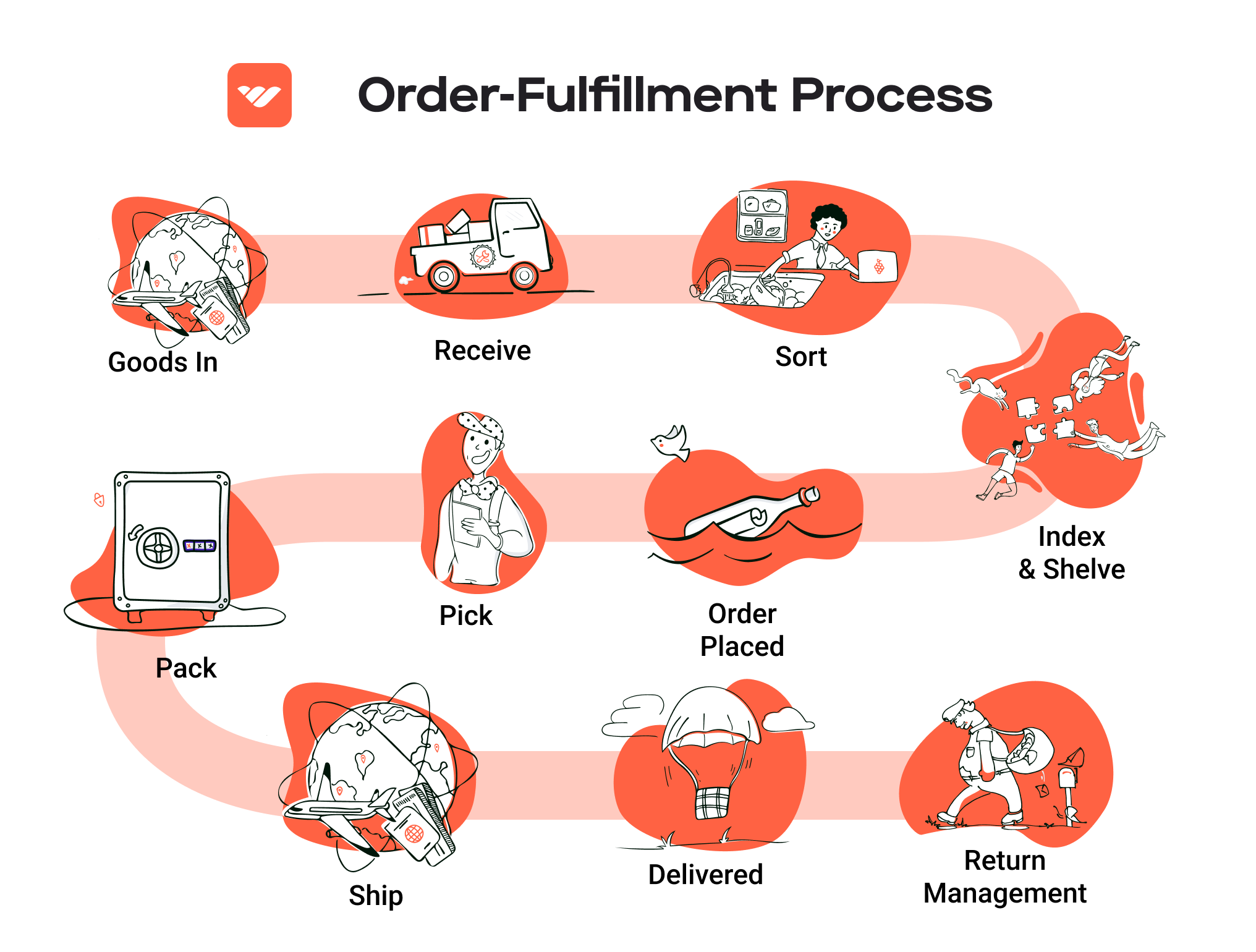
Pros of Using FBA
Prime Eligibility
One of the most significant advantages of using FBA is that products become eligible for Amazon Prime. This can substantially increase sales since Prime members often prefer products that offer fast, free shipping. Being a part of the Prime program can enhance visibility and attract more customers.
Customer Trust
Amazon is synonymous with customer service and reliability. When sellers use FBA, their products carry the Amazon brand, which instills trust in customers. This can lead to higher conversion rates, as shoppers are more likely to purchase products that come with the assurance of Amazon’s service standards.
Multi-Channel Fulfillment
FBA allows sellers to streamline their operations across different sales channels. By using Amazon’s logistics for orders from other platforms, sellers can maintain a consistent inventory and leverage Amazon’s efficiencies for their entire business. This is particularly beneficial for those scaling their operations and looking to reach customers beyond Amazon.
Scalability
FBA enables sellers to scale their businesses without the need for significant investments in warehousing or logistics. As demand grows, sellers can send more inventory to Amazon’s fulfillment centers, allowing them to meet increased order volume without additional overhead.
Cons of Using FBA
High Fees
While FBA provides many benefits, it comes with associated costs. Sellers must pay storage fees for their products, which can add up, especially for items that do not sell quickly. Additionally, there are fulfillment fees for each order processed through FBA. For sellers with thin margins, these fees can significantly impact profitability.
Strict Inventory Rules
Amazon has strict rules regarding inventory management. Sellers must comply with specific guidelines related to packaging, labeling, and shipping products to fulfillment centers. Non-compliance can result in additional fees or penalties, which can be frustrating for sellers who may not be familiar with these regulations.
Commingling Risks
FBA products are often commingled, meaning that inventory from multiple sellers is stored together. While this can enhance efficiency, it also poses risks. If a product from another seller is defective or has issues, it could impact the seller’s ratings and reviews. Sellers have limited control over the quality of products that are shipped to customers if their inventory is mixed with that of other sellers.
Limited Control Over Fulfillment
When using FBA, sellers relinquish control over the fulfillment process. This means that they cannot customize packaging or include personalized notes with their orders. For some brands, this lack of control can be a disadvantage, particularly for those who prioritize customer experience and brand identity.
Who is FBA Best For?
Fulfillment by Amazon is best suited for e-commerce businesses that:
-
Have High Sales Volume: Sellers with a steady flow of orders can benefit from the efficiencies FBA offers. The more orders processed, the more cost-effective FBA becomes.
-
Sell Consumer Products: Products that are small, lightweight, and fast-moving are ideal for FBA. Items that fall under these categories can help sellers minimize storage and fulfillment fees.
-
Prioritize Customer Trust: Brands looking to enhance their credibility and reach with customers should consider FBA. The trust associated with Amazon can be a significant advantage for sellers.
-
Desire to Scale Quickly: For entrepreneurs aiming to scale their business without the overhead of managing logistics and warehousing, FBA offers a practical solution. It allows them to focus on marketing and sales while Amazon handles fulfillment.
-
Utilize Multi-Channel Selling: Businesses that sell on multiple platforms and want to streamline their logistics can benefit from using FBA to fulfill orders from various sales channels.
In conclusion, Fulfillment by Amazon presents a compelling option for many e-commerce businesses, offering substantial benefits alongside some challenges. By understanding these pros and cons, sellers can make informed decisions about whether FBA aligns with their operational goals and business model.
Core Services Offered by Fulfillment Centers
Inventory Management & Warehousing
Inventory management is a critical component of any e-commerce operation, and fulfillment centers are designed to optimize this process. Fulfillment centers like Amazon’s SLC1 utilize sophisticated inventory management systems that track stock levels, orders, and shipments in real-time. This technology allows businesses to maintain optimal inventory levels, reducing the risk of overstocking or stockouts.
The benefits of effective inventory management through a fulfillment center include:
- Increased Efficiency: Automated systems minimize manual errors and streamline inventory tracking, allowing businesses to focus on strategic growth rather than day-to-day operational challenges.
- Cost Savings: By reducing excess inventory and associated carrying costs, businesses can allocate resources more effectively, impacting their bottom line positively.
- Enhanced Visibility: With real-time data access, businesses can make informed decisions regarding inventory replenishment and sales forecasting, improving overall operational agility.
Pick and Pack Services
Pick and pack services are essential for fulfilling customer orders accurately and efficiently. In this process, fulfillment center associates or robots select items from the warehouse based on customer orders, pack them securely, and prepare them for shipment. Fulfillment centers like SLC1 are equipped with advanced robotics that streamline this process, allowing for quick and precise order fulfillment.
The advantages of utilizing pick and pack services include:
- Speed: Automated systems can drastically reduce the time it takes to fulfill orders, leading to faster shipping times and improved customer satisfaction.
- Accuracy: With advanced technology and trained staff, fulfillment centers can minimize picking errors, ensuring that customers receive the correct items.
- Scalability: As e-commerce businesses grow, fulfillment centers can easily scale their pick and pack operations to meet increasing demand without the need for significant additional investment in infrastructure.
Kitting and Assembly
Kitting and assembly services involve grouping multiple products into a single package or kit before shipping. This is particularly beneficial for businesses offering bundled products or promotional items. Fulfillment centers can handle the intricate processes of assembling items, labeling, and preparing them for distribution.
Key benefits of kitting and assembly services include:
- Enhanced Customer Experience: Offering pre-packaged kits can simplify the purchasing process for customers, providing them with everything they need in one convenient package.
- Reduced Time to Market: By outsourcing kitting and assembly to a fulfillment center, businesses can accelerate their product launch timelines, allowing them to respond swiftly to market demands.
- Cost Efficiency: Outsourcing these services can be more cost-effective than managing assembly in-house, especially for businesses without the necessary infrastructure or labor resources.
Returns Management (Reverse Logistics)
Returns management is often one of the most challenging aspects of e-commerce operations. Fulfillment centers provide robust reverse logistics services that simplify the returns process for both businesses and customers. This includes handling returned items, processing refunds or exchanges, and restocking products as needed.
The benefits of an effective returns management system through a fulfillment center are significant:
- Improved Customer Satisfaction: A streamlined returns process enhances the overall shopping experience, encouraging repeat business and fostering customer loyalty.
- Operational Efficiency: By outsourcing returns management, businesses can focus on core activities, reducing the time and resources spent on handling returns internally.
- Data Insights: Fulfillment centers can provide valuable data on return trends, helping businesses identify potential issues with specific products or categories and make informed decisions to mitigate future returns.
Conclusion
Utilizing a fulfillment center like Amazon’s SLC1 can significantly enhance the operational efficiency of e-commerce businesses. By leveraging core services such as inventory management, pick and pack services, kitting and assembly, and returns management, businesses can streamline their logistics processes, reduce costs, and ultimately improve customer satisfaction. As e-commerce continues to grow, these services will be vital for companies looking to scale effectively and maintain a competitive edge in the market.
How to Choose a Fulfillment Partner: A 6-Point Checklist
Location & Warehouse Network
Importance:
The geographical location of your fulfillment partner’s warehouses plays a critical role in shipping speed and costs. A partner with strategically located warehouses can help you reduce transit times and shipping expenses, thereby enhancing customer satisfaction.
Questions to Ask:
– Where are your warehouses located, and how do they align with our customer base?
– What is your average shipping time to major regions?
– Can you provide details on your logistics network, including partnerships with carriers?
Technology & Integrations
Importance:
Efficient fulfillment relies heavily on technology. A partner that offers robust technology platforms can streamline operations, improve accuracy, and provide real-time tracking. Integration with your existing systems (e.g., e-commerce platforms, inventory management) is crucial for seamless operations.
Questions to Ask:
– What technology platforms do you use for order management and inventory tracking?
– Can your systems integrate with our existing e-commerce and inventory management software?
– How do you ensure data security and compliance with regulations?
Specializations (e.g., Cold Storage, Oversized Items)
Importance:
Different products have different storage and handling needs. If you sell specialized items, such as perishables requiring cold storage or oversized products, partnering with a fulfillment center that has the necessary capabilities is essential.
Questions to Ask:
– Do you have facilities that cater to specific storage requirements (e.g., cold storage, hazardous materials)?
– What experience do you have in handling products similar to ours?
– Can you accommodate seasonal fluctuations in product demand?
Scalability & Capacity
Importance:
As your business grows, your fulfillment needs will evolve. A good partner should be able to scale with you, whether that means expanding storage capacity, increasing order volume, or adapting to new product lines.
Questions to Ask:
– How do you handle peak seasons or unexpected spikes in order volume?
– What is your current capacity, and how do you plan to expand in the future?
– Can you provide case studies or examples of how you have scaled operations for other clients?
Pricing and Contracts
Importance:
Understanding the pricing structure and contract terms is vital for financial planning. Hidden fees can significantly impact your bottom line, so clarity on pricing is essential.
Questions to Ask:
– What is included in your pricing structure (e.g., storage fees, pick-and-pack fees, shipping costs)?
– Are there any potential hidden fees we should be aware of?
– What are the terms of the contract, and is there flexibility for renegotiation as our needs change?
Customer Support & Reviews
Importance:
Exceptional customer support can make a significant difference in your fulfillment experience. A partner who is responsive and proactive can help you navigate challenges more effectively. Additionally, checking reviews can provide insights into the partner’s reliability and performance.
Questions to Ask:
– What support channels do you offer (e.g., phone, email, chat), and what are your response times?
– Can you provide references or case studies from current or past clients?
– How do you handle issues or disputes that may arise during the fulfillment process?
Conclusion
Choosing the right fulfillment partner is a critical decision that can influence the efficiency of your operations and the satisfaction of your customers. By using this checklist, you can ensure you are considering all the important factors that will contribute to a successful partnership. Always remember that the right fit is not just about price but also about the ability to meet your unique business needs as you scale.
Understanding Fulfillment Pricing: A Breakdown of Common Fees
Initial Setup Fees
Initial setup fees are typically incurred when you first start using a fulfillment service. These fees cover the costs associated with integrating your e-commerce platform with the fulfillment center’s systems. The charges can vary significantly based on the complexity of your setup, including the number of products you offer and the level of customization required for your specific operational needs.
Calculation: Initial setup fees can range from a flat fee to a percentage of your first month’s sales. Some fulfillment centers may charge a one-time fee for onboarding, which can include system integration, training, and account setup. It’s important to clarify what services are included in this fee to avoid unexpected costs.
Receiving Fees
Receiving fees are charged when inventory is delivered to the fulfillment center. This fee covers the labor and resources required to unload, inspect, and store your products. The costs can vary depending on the type of products being received, the volume of the shipment, and the time taken to process the goods.
Calculation: Receiving fees are usually calculated per pallet or per hour of labor required for receiving shipments. For instance, a fulfillment center might charge a specific fee for every pallet received, plus additional fees for any extra handling or inspection processes. Ensure you understand the criteria for these charges, as they can quickly add up if you have frequent shipments.
Storage Fees (per pallet/bin)
Storage fees are incurred for the space your products occupy within the fulfillment center. These fees can be charged on a per-pallet or per-bin basis and can vary depending on the size of your inventory and the duration it remains stored.
Calculation: Storage fees are typically calculated on a monthly basis. For example, you might be charged a fixed fee for each pallet stored per month, with additional costs for any overage beyond a specified threshold. Some fulfillment centers may offer tiered pricing, where the cost per pallet decreases as your volume increases. It’s crucial to monitor your inventory turnover to manage these costs effectively.
Pick & Pack Fees (per item/order)
Pick and pack fees are charged for the labor involved in selecting items from inventory and packing them for shipment. This fee is essential in understanding your overall fulfillment costs, as it directly affects your order processing expenses.
Calculation: Pick and pack fees are usually assessed on a per-item or per-order basis. For example, a fulfillment center may charge a standard fee for picking items and an additional fee for packing them into boxes. If your orders typically contain multiple items, this fee can increase significantly. It’s advisable to inquire about any volume discounts that might apply if you consistently ship high quantities.
Shipping Fees
Shipping fees are perhaps the most variable component of fulfillment pricing. They encompass the costs associated with transporting your products to customers, which can vary based on the shipping method, destination, package weight, and carrier used.
Calculation: Shipping fees are generally calculated based on the size and weight of the package, the shipping speed chosen (standard, expedited, etc.), and the distance to the destination. Some fulfillment centers may offer discounted shipping rates through partnerships with carriers, which can help reduce costs. It’s beneficial to analyze your shipping needs and negotiate rates with fulfillment partners accordingly.
Tips for Getting an Accurate Quote
-
Understand Your Needs: Clearly define your inventory volume, order frequency, and product types. This information will help fulfillment centers provide a more tailored quote.
-
Ask for Detailed Pricing Structures: Request a breakdown of all potential fees, including any hidden costs that may arise. This will give you a comprehensive view of your potential expenses.
-
Negotiate Volume Discounts: If you anticipate significant order volumes, don’t hesitate to negotiate for better rates, especially on storage and shipping fees.
-
Consider Seasonal Fluctuations: Be aware that some fulfillment centers may have different pricing structures for peak seasons. Ensure you factor in these potential increases when planning your budget.
-
Review Contracts Carefully: Before signing any agreements, thoroughly review the terms related to fees, especially those that pertain to initial setup, storage, and shipping.
By following these guidelines, you can gain a clear understanding of fulfillment pricing and make informed decisions that will help your e-commerce business scale effectively.
Frequently Asked Questions (FAQs) about Fulfillment
1. What is the Amazon Fulfillment Center Tour SLC1?
The Amazon Fulfillment Center Tour SLC1 offers an in-person experience where visitors can observe the inner workings of a robotics sortable facility in Salt Lake City, Utah. The tour showcases how Amazon associates and advanced robotics work together to process and ship items efficiently. Each tour lasts approximately 60-90 minutes.
2. How do I register for the tour?
To register for the Amazon Fulfillment Center Tour, you can visit the Amazon Tours website. It’s important to sign up in advance, as walk-ins are not permitted.
3. What should I wear to the tour?
Visitors are required to wear flat, closed-toed shoes, and long pants are recommended for safety. Shirts must have sleeves, and loose-fitting clothing or accessories are not permitted. Guests who do not adhere to the dress code will not be allowed to participate in the tour.
4. Is there an age limit for the tour?
Yes, the minimum age for participation is 6 years old. Children under 18 must be accompanied by a responsible adult. For groups of minors, there should be at least one adult for every 10 children.
5. Are there any accessibility options available for the tour?
Yes, the Amazon Fulfillment Center is accessible to individuals with disabilities. If you require specific accommodations, it’s advisable to reach out via the Amazon Tours Help Center prior to registration to ensure your needs can be met.
6. What items are allowed on the tour?
You may bring essential items such as a wallet, keys, and a transparent water bottle. However, cell phones, bags, and backpacks are not permitted during the tour. If you need to bring these items, secure storage will be provided.
7. How much do fulfillment services cost?
Fulfillment service costs can vary widely based on factors such as storage, order volume, and additional services like packaging and shipping. On average, businesses can expect to pay anywhere from $2 to $5 per order, plus storage fees, which can range from $0.10 to $0.50 per cubic foot per month.
8. What’s the difference between a warehouse and a fulfillment center?
A warehouse is primarily used for storage, while a fulfillment center focuses on processing and shipping orders directly to customers. Fulfillment centers often utilize advanced technology and processes to ensure rapid order fulfillment and customer satisfaction.
9. What is a 3PL (Third-Party Logistics)?
A 3PL is a service provider that manages logistics and supply chain operations on behalf of businesses. This can include warehousing, inventory management, and order fulfillment, allowing companies to outsource these functions and focus on core business activities.
10. Can I take photos during the tour?
Photography is generally not allowed during the tour, except in designated areas. Guests are advised to leave their cell phones at home or in a vehicle to ensure a distraction-free experience. If you must bring your phone, secure storage will be provided for personal belongings during the tour.
Conclusion: Is Outsourcing Fulfillment the Right Move for Your Business?
Evaluating the Benefits of Outsourcing Fulfillment
Outsourcing fulfillment can be a game-changer for e-commerce businesses looking to scale. One of the primary benefits is the significant time savings. By leveraging a fulfillment center’s resources, businesses can focus on core activities such as marketing and product development instead of getting bogged down in logistics. This allows for a more agile response to market demands and customer needs.
Scalability is another compelling reason to consider outsourcing. As your business grows, managing inventory, shipping, and returns can become increasingly complex. A fulfillment partner can seamlessly adjust to your changing needs, whether you’re experiencing a seasonal spike in orders or expanding into new markets. This flexibility can help maintain customer satisfaction and loyalty, critical components of long-term success.
Moreover, fulfillment centers bring expertise that many small to medium-sized businesses may lack. They often have advanced technology, strategic shipping partnerships, and best practices honed through years of experience. This can translate into improved efficiency, reduced shipping costs, and ultimately, a better customer experience.
However, choosing the right fulfillment partner is crucial. Not all providers offer the same level of service or capabilities. It’s important to conduct thorough research and consider factors such as location, technology, customer service, and pricing. A strategic partnership can be a catalyst for growth, but a poor choice can hinder your operations.
Take Action
To determine if outsourcing fulfillment is the right move for your business, start with an audit of your current shipping processes. Assess where you might be losing time, money, or customer satisfaction. This evaluation will provide insights into whether a fulfillment partner could enhance your operational efficiency and support your growth objectives. Don’t hesitate to explore your options; the right fulfillment solution could be the key to unlocking your business’s full potential.
Important Disclaimer
⚠️ Important Disclaimer
The information in this guide is for educational purposes. Fulfillment services, pricing, and platform features change frequently. Always conduct your own due diligence and consult with providers directly before making business decisions.
